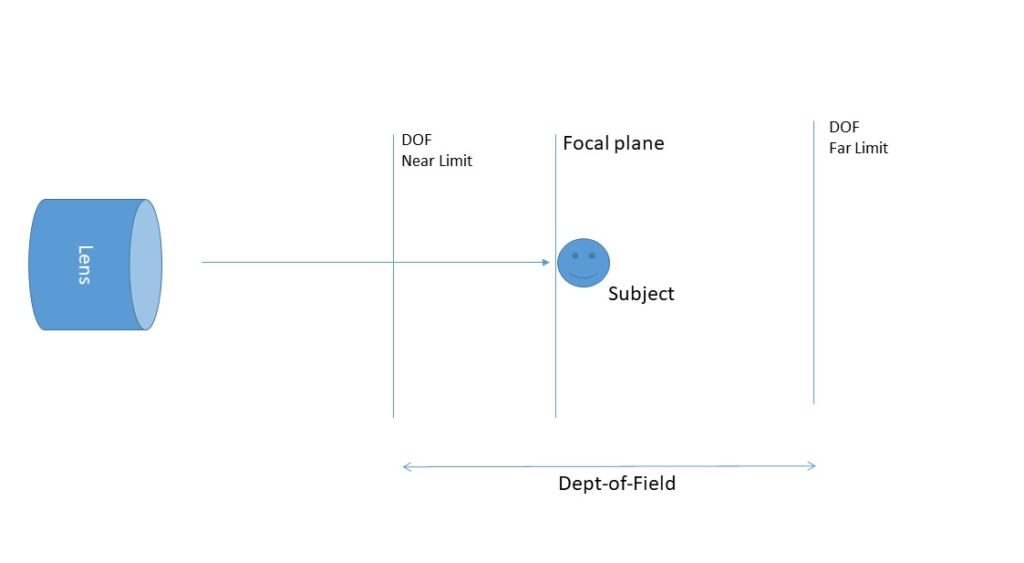Acceptable sharpness
Depth-of-fields (DOF) is the area (depth) in which subjects in view of your lens appear to be acceptably sharp. The DOF area closest to you is called the DOF near limit, and the other end the DOF far limit. Within that interval, subjects appear to be sharp.
If you have not tried to focus manually, I encourage you to try so. Flick the little switch on the front left of your camera (typically) from AF to M, and try to turn the focus ring manually. Notice how different parts of the scene becomes sharp as you turn the ring. You are actually “pushing” the focal plane back and forth when you turn the focus ring – the focal plane being where you as photographer decide the image is to be sharp, but there is an element of “forgiveness” prior and after the focal plane and that is the DOF.
DOF illustrated
I think of the DOF being around 1/3 prior to the focal plane (the focus point) and 2/3 after the focal plane, but this is not a technically correct way to see it, but if you like me just want to have a drivers license to what DOF is, then this is a good and operational way to think about DOF.
Your DOF depends on many factors such as the distance to the subject, the sensor size, most notably the aperture and the length of your lens. Most photographers work with the aperture to control the DOF, but you can also use the distance to the subject.
Macro photography
Macro photographers suffer from the fact that when you are super close to your subject, the DOF shrinks to almost noting, even if you pump up the Aperture to something crazy high – it won’t help, as the distance is so small that you get a paper thin DOF no matter what. Therefore many macro photographers use focus stacking, where you take several images and change the focus point, and then in post merge the sharp parts together to create an image with a larger DOF.
Portrait photography
Portrait photographers use a relatively small aperture to shrink the DOF so that the background becomes very blurred and hence does not take focus from the subject. You can also get this effect at a higher aperture (and hence DOF) if you just make sure that the distance from the subject to the background is by factors way bigger than the distance from the lens to the subject.
Further reading
What is the exposure triangle?
What are exposure metering modes?

